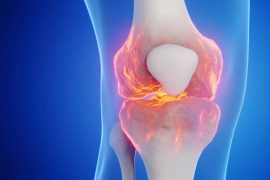Dr. Rana K Chengappa is a retired Colonel from the Indian Army who has been practicing sports science and rehabilitation for the last 30 years and also runs two well-facilitated Sports Medicine clinics. He is also an existing member of the Anti-Doping Disciplinary Panel under NADA.
An expert in Sports sciences and existing Member Governing Body of National Doping Testing Lab, Dr. Rana K Chengappa walks the talks with Abhinav from Sportz Business Magazine. In this interview, the veteran shares his insights over sports injuries and how training error makes athletes vulnerable to injuries. Edited Nub Below.
Q What are the probable reasons for Sports Injuries?
In terms of sports injuries, we commonly see “overuse injuries” which occur due to repeated activity and acute injuries due to trauma. Overuse injuries could be due to external factors such as ‘ too much, too soon, too fast, too hard, too poor. This implies a training error of excessive physical activity / poor sporting gear while playing. Alternatively, there are internal factors that contribute to such injuries such as mal-alignments or mal-positions of the body.
Q What one should do to avoid these?
What one should do to avoid these? One of the most important ways to prevent such injuries from occurring is to ensure that prior to indulging in any physical/ sports activities we begin with a good warm-up and dynamic stretching, and end with a proper cool down and stretching.
Additionally, these activities should be accompanied by adequate hydration, proper nutrition, correct footwear/sports gear and proper recovery from exercise activity. The best method to prevent the occurrence of such injuries is to train specifically for the five demands of the sport in terms of strength, endurance, speed, flexibility, and coordination. Training should be done in a gradual, phased manner such that the athlete is able to peak at the right moment and therefore avoids overloading the body.
Q Tell me about Traumatic Brain Injury (TBI) and how common is this? Precaution for the same.
Traumatic brain injury occurs when there is a severe blow to the head which can occur in motor vehicle accidents, contact and combat sports besides assault injuries. They can range from concussions to permanent brain damage. They need to be addressed urgently by competent medical authorities, beginning from initial first aid of stabilizing a head injury and transportation correctly to the nearest Trauma Center. Prevention and precaution is only adequate protective headgear.

Q How much RICE-Rest, Ice, Compression and Elevation process is effective in Sports Injury?
Most sports injuries mild or moderate injuries, such as sprains, strains, and bruises should be ideally tackled with RICE protocol for the first 48 hours with 6 hourly intervals of ice application for 10 to 15 minutes. But care should be taken in the elderly especially with circulation or clotting disorders.
Q How often surgery is recommended in the case of Sports Injury?
International literature on sports injuries states that most literature suggests up to 80% sports injuries are grade 1 to grade 2 injuries which do not require an operative intervention but need proper rehabilitation to ensure the return to play in the shortest possible time.
Q How to avoid chances of sports injuries in case of flat feet?
Flat feet are generally physiological in nature and majority of them resolve on its own between the age of 7 to 10 years years. Parents need to be reassured when they observe that their children with flat feet that it will gradually resolve and they need to observe for symptoms such as pain, abnormal wear of shoe soles, easy fatiguing of legs, avoidance of athletic activities and muscle cramps.
Most cases should undergo conservative methods as these generally resolve the majority of symptoms and therefore avoiding surgery. The conservative methods involve trained physiotherapists using various techniques of stretching, strengthening and activity modification. Orthotists can customize insoles/shoes for providing support to the arch.
Q In general, how people should take care of their joints and aging bones.
It depends on the severity of the joint affected and the condition of muscles, for example, someone with mild osteoarthritis of the knee with ideal weight can take up an exercise program where else an overweight person has to first lose weight using an alternative exercise method like swimming or cycling along with a specific strength training program and then begin a running program. There are elderly with moderate level arthritis with good muscle strength and correct bodyweight taking part in long-distance running. The key to joint health is the correct weight. Therefore a good exercise program that involves aerobic activities 3 to4 times like walking, cycling, and swimming coupled with strength training sessions twice a week with light weights and yoga would promote good health of muscles and bones.
Q Please suggest some dietary nutritious food items, medicines, and supplements that they can take regularly to avoid any sports injury.
Dietary advice for adequate carbohydrates and proteins post work out also aid and influence injury patterns. The trend to use excessive supplements of vitamins and protein can be avoided with an adequate balanced well thought of diet. It goes without saying that no banned substances such as anabolic steroids should be used, either short term or long term, as these most often can be very detrimental to health.
Q What is a runner’s knee? How to avoid this?
Commonest knee pain seen in the sports medicine clinic relates to patella-femoral pain syndrome which is because of the knee cap rubbing against the thigh bone. The reasons are the patella movements being disturbed most often due to mechanical inadequacies of the controlling thigh muscle. This condition often affects runners and physically active women.
Recovery tips include reduce mileage, avoid downhill runs, alternative training using elliptical bike/ swimming pool, ice the injured knee.
Prevention includes, shorten stride, land with the knee slightly bent, stretch hip flexors and strengthen glutes.
Q Finally, your suggestion for those who have a sedentary lifestyle and should start playing sports.
For the uninitiated, begin a program for building stamina starting off with a walk-jog program, then gradually increasing the goal to achieve a gradual work time of 45 minutes. Strength work out would involve both lower and upper body strength, entails the ability to do continuous work without undue fatigue, the method is to do 3 to 4 upper body and 3 to 4 lower body exercises plus 1 back strengthening and core work out in a circuit method with low weight and 10 to 12 repetitions gradually building from 1 set to 3 sets of exercises. The thumb rule for weight to be lifted is that it should be enough to result in some fatigue at the last 2 repetitions. Strength training should be performed 2 to 3 times a week only. In the meanwhile identify your sports and gradually adapt to its techniques, you will enjoy the sports if your basic fitness is also developed thereby preventing injuries. Ultimately transition from a sedentary lifestyle to a sports enthusiast has multiple health and mental benefits alike.
Disclaimer:
The information contained in this article is for educational and informational purposes only and is not intended as a health advice. We would ask you to consult a qualified professional or medical expert to gain additional knowledge before you choose to consume any product or perform any exercise.






